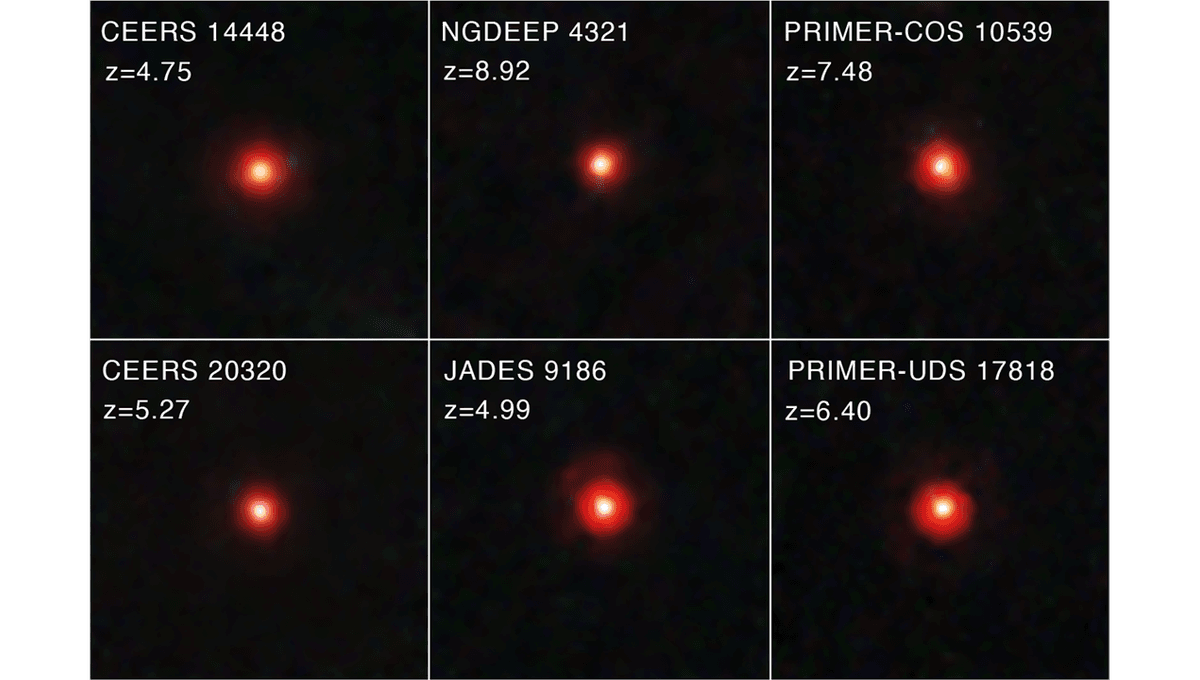
Just over two years ago, observations from JWST had astronomers puzzled. Some galaxies were spotted that seemed to break our expected models. If the light we were getting from them was coming from their stars, they were simply too big to have formed in the few hundred million years that separated them from the birth of the universe. From the get-go, researchers suspected that black holes were behind the anomaly and now they have some important confirmation.
In the modern universe, supermassive black holes at the center of galaxies and their host galaxies grow together. But this might not be the case for the earliest galaxies. The objects known as Little Red Dots (LRDs) are believed to represent a completely new class of galaxies that only existed in the early universe.
All these galaxies emerged around 600 million years after the Big Bang and existed up to the first 1.5 billion years after. In astronomical parlance, that period is known as high redshift. Using observations of LRDs from many different publicly available surveys from JWST, the team was able to estimate that 70 percent of these objects have gas rotating at 1,000 kilometers per second (2 million miles per hour), suggesting the presence of a supermassive black hole.
“There’s a substantial amount of work being done to try to determine the nature of these little red dots and whether their light is dominated by accreting black holes,” lead author Dale Kocevski of Colby College said in a statement.
Researchers have not found evidence from different wavelengths that these objects do indeed hide a supermassive black hole, in particular, there is nothing in X-rays. This is not entirely surprising: research has shown that black holes at the center of galaxies are often shrouded in thick clouds of gas, something that persists today.
However, there is no equivalent in recent times. These sources, if the model is correct, are dominated by their black holes and not by their stars. Despite the early analysis suggesting that they were too big to exist, once a growing black hole is taken into account, these sources become smaller and more lightweight – perfectly explainable in current theories, even though they no longer exist.
“The most exciting thing for me is the redshift distributions. These really red, high-redshift sources basically stop existing at a certain point after the Big Bang,” said Steven Finkelstein, a co-author of the study at the University of Texas at Austin. “If they are growing black holes, and we think at least 70 percent of them are, this hints at an era of obscured black hole growth in the early universe.”
The team is investigating several open questions, both with theory and new observations. Such as: are these black holes truly deeply shrouded? Why have these objects stopped existing? Having them as a new class solves one problem but raises new questions.
“There’s always two or more potential ways to explain the confounding properties of little red dots,” said Kocevski. “It’s a continuous exchange between models and observations, finding a balance between what aligns well between the two and what conflicts.”
These results were presented in a press conference at the 245th meeting of the American Astronomical Society and they will be published in The Astrophysical Journal.
Source Link: New Class Of Galaxies Solves "Universe Breaking" Cosmological Mystery